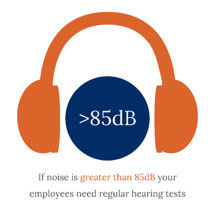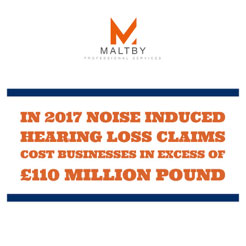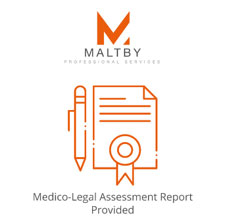
Noise exposure at work:
Have you thought about the risks?
Noise exposure at work: Have you thought about the risks?
My name is Adam Chell, and I’m the clinical director for Sevenoaks Hearing. I am a fully qualified audiologist with 15 years’ experience, specialising in hearing loss prevention and rehabilitation. I work with Maltby Professional Services to assist with hearing protection in the workplace and to provide on-site audiological assessments.
Do the Noise at Work Regulations apply to you?
If your employees are regularly exposed to noise levels exceeding 85dB you should be offering them regular hearing tests (reg 9, Noise at Work Regulations 2005).

A baseline audiogram should be conducted when they start employment. This should be repeated annually for the first two years and can be reduced to a test every three years thereafter if no concerns are raised.
If you are not conducting this routine surveillance for these employees, you are putting yourself at risk of future litigation. As an employer, it is down to you to prove that you minimised the risk of hearing loss as much as possible and to monitor hearing levels for those where the risk cannot be avoided.

In 2017, there were 23,312 noise induced hearing loss claims. These claims had a total estimated cost of over £110 million (Institute and Faculty of Actuaries UK Deafness Working Party). By simply implementing a noise action plan and undertaking regular surveillance of your employees, you can protect yourself against future claims.
Providing hearing protection is not enough
Most people aren’t aware that offering hearing protection should be considered the last course of action when dealing with high levels of noise.
A noise action plan needs to be conducted to ensure that you have done all you can to minimise the risk of noise exposure first.
It may mean purchasing the more expensive machine because it is quieter. It could involve using dampening material to isolate the working zone from sources of noise. You would also be required to make sensible adjustments to essential equipment or installations to reduce noise wherever possible.
If you haven’t conducted and documented this action plan, you are vulnerable to future litigation if you are regularly exposing your employees to noise above 85dB.
Training
Overprotection can sometimes be as ineffective as under protection. It is important to guard your employees from overprotection of noise from ear plugs because it can result in isolation and inevitable underuse.

Hearing protection only protects if worn fully and properly. To achieve this requires information, instruction, training, supervision and motivation.
So, what can you do?
The very first thing you should do is find a suitable professional to conduct your risk assessment and generate a noise action plan.
The noise action plan includes making appropriate adjustments to the working environment and supplying suitable equipment. As well as this, noise levels should be measured to ensure the most appropriate hearing protection is being offered.
At Sevenoaks Hearing, we can arrange to come and conduct audiometry on all employees that work in high noise environments and review this annually.
If they are already wearing hearing protection, we would encourage all employees to bring it along so the audiologist can inspect for damage as well as provide training and information on appropriate usage.

As part of this audiological assessment, you will be provided with a full written report of the outcome, along with any recommendations for that individual. They will sign a statement to say that have understood their training and feel comfortable implementing safe working practices, including that they have been recommended and offered the most suitable hearing protection for their role.
How do you arrange these assessments?
All you need to do is get in touch with Maltby Professional Services. Through them, we will conduct the initial noise action plan. From there, we will determine if we are required to conduct audiological screening. Hearing test rates are negotiated depending on the number of clients seen in one session and if multiple sites are involved, discounts can be discussed.
References
https://www.hse.gov.uk/vibration/hav/roadshow/al7.pdf
https://www.hse.gov.uk/vibration/hav/roadshow/al9.pdf
https://www.actuaries.org.uk/practice-areas/general-insurance/disbanded-research-working-parties/uk-deafness-claims
http://www.legislation.gov.uk/uksi/2005/1643/contents/made

